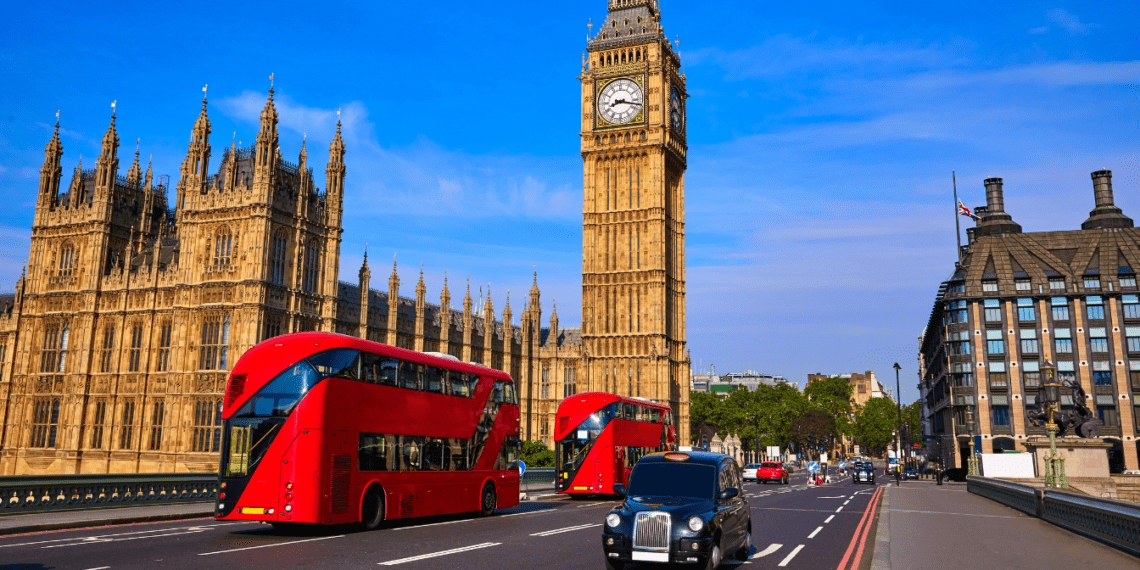Ever thought about the gems hidden in the United Kingdom’s history? It’s a land filled with wonders, from the iconic Stonehenge to the majestic castles in Britain. These places are a dream for anyone who loves history or architecture. But do you know what secrets these famous British monuments and English heritage sites keep, and how they’ve affected the country’s story?
Key Takeaways
- Explore the UK’s most iconic historic landmarks, uncovering the rich tapestry of Britain’s past.
- Discover the architectural marvels and cultural treasures that have stood the test of time, from prehistoric relics to opulent estates.
- Immerse yourself in the remarkable history that has shaped the United Kingdom, from the mysterious Stonehenge to the grand castles in britain.
- Uncover the secrets behind the country’s famous British monuments and English heritage sites.
- Gain insights into the diverse eras that have left their indelible mark on the UK, from the Romans to the Tudors and the Georgians.
Prehistoric Era: Unveiling Britain's Ancient Roots
Britain’s prehistoric past goes back hundreds of thousands of years. The first humans arrived around 900,000 years ago. This long journey, from Stone Age to Iron Age, greatly influenced Britain’s landscapes and culture. Stonehenge and Skara Brae are two famous UK sites. They provide insight into ancient life and beliefs.
Stonehenge is a ring of giant stone pillars. It’s a world-famous prehistoric site. It was built around 3100 BC and still puzzles experts today. With its massive stones, Stonehenge highlights ancient Britons’ impressive engineering skills and sacred rituals.
Archaeological digs at Stonehenge have revealed its past. Over 50,000 cremated bones of 63 people were found. These finds date back more than 5000 years. It also shows stones from Wales used as early as 3000 BC. Stonehenge is a UNESCO World Heritage Site, protected since 1882. It’s a key prehistoric landmarks uk, fascinating all who visit.
Skara Brae is a Neolithic settlement in Scotland. It offers a well-preserved look at Neolithic daily life. This 5,000-year-old village stayed hidden under sand dunes. It survived until its discovery in 1850, providing an untouched view of ancient living conditions.
The village’s houses are remarkably intact, showing how people lived. They used stone for furniture and had clever drainage systems. Tools, pottery, and art found there display the Neolithic Britons’ skills. Skara Brae exhibits their ingenuity, giving us a vivid look into our ancient past.
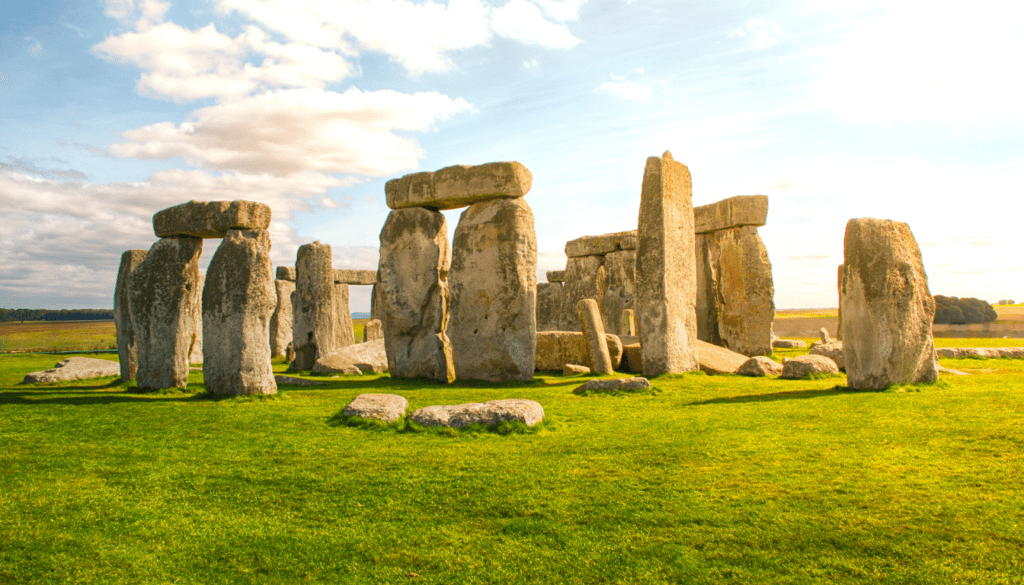
“Stonehenge stands as a testament to the engineering prowess and ritualistic practices of the prehistoric Britons.”
Roman Footprints: Exploring Britain's Classical Heritage
The Romans arrived in Britain during the 1st century AD. They brought new architecture, culture, and rules to the land. Hadrian’s Wall, built by the Emperor Hadrian, still stands as a reminder of their time in the country. It was a 73-mile-long fortification that marked the edge of the Roman Empire in England.
Between 122 and 130 AD, six Roman legions built Hadrian’s Wall. This task stretched over 73 miles. It was a key part of the Roman defenses.
Visiting Hadrian’s Wall lets you see Roman life up close. You can walk on the wall and see the forts. It’s a chance to experience ancient history.
Places like Birdoswald Fort offer great views and a long section of the wall to see.
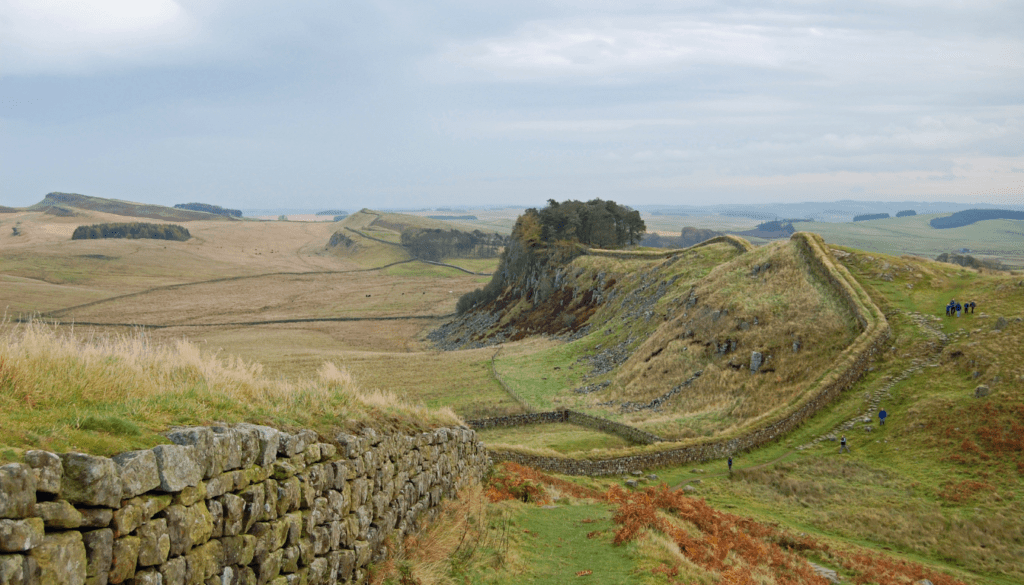
“Hadrian’s Wall stands as a testament to the engineering prowess and military might of the Roman Empire, serving as a powerful symbol of their enduring legacy in Britain.”
There’s more to see than just Hadrian’s Wall. Other sites in the UK are full of Roman history and architecture. Baths in Bath and the Fishbourne Palace in West Sussex are just the start.
| Roman Site | Location | Significance |
|---|---|---|
| Chedworth Roman Villa | Gloucestershire | Believed to have been built around 120 AD, featuring well-preserved mosaics and baths |
| Cirencester (Corinium Dobunnorum) | Gloucestershire | Second-largest settlement in Britain after London during Roman times |
| Chester Roman Amphitheatre (Deva) | Cheshire | Able to seat between 8,000 and 12,000 spectators, part of the Roman settlement of Deva founded in 79 AD |
| Fishbourne Roman Palace | West Sussex | Constructed in 75 AD, the largest Roman residential site in Britain |
| Bignor Roman Villa | West Sussex | Had a stone structure built during the 3rd century, with later additions in the 4th century |
The roman britain landmarks are spread across the UK. They offer a deep look into the Roman Empire’s history and impact. By visiting these sites, you can get to know the Romans’ architecture and life.
Anglo-Saxon Influences: Uncovering Britain's Medieval Past
After the Roman Empire lost its grip on Britain, the Anglo-Saxons slowly became the dominant force. This period started in the 5th century A.D. It was a time of significant change in Britain’s history.
Different Germanic groups settled in Britain, like the Angles, Saxons, and Jutes. They brought their own culture and language, which fused to create Old English. Northumbria, Mercia, and Wessex were some of the strong Anglo-Saxon kingdoms. They played a big part in shaping Britain’s heritage.
The Anglo-Saxons left a lasting mark on Britain’s medieval landmarks. Their building techniques and designs influenced structures from big cathedrals to small farms. These buildings show us what anglo-saxon britain and the britain’s medieval heritage were like.
Excavations have revealed a lot about how the Anglo-Saxons lived and were buried. Sites like cemeteries have uncovered pieces like jewelry and weapons. These findings give us clues about their way of life and beliefs.
The Anglo-Saxons’ era is sometimes called the “Dark Ages.” However, their impact on Britain’s culture and landscape cannot be overlooked. Their language and buildings still shape the country today.
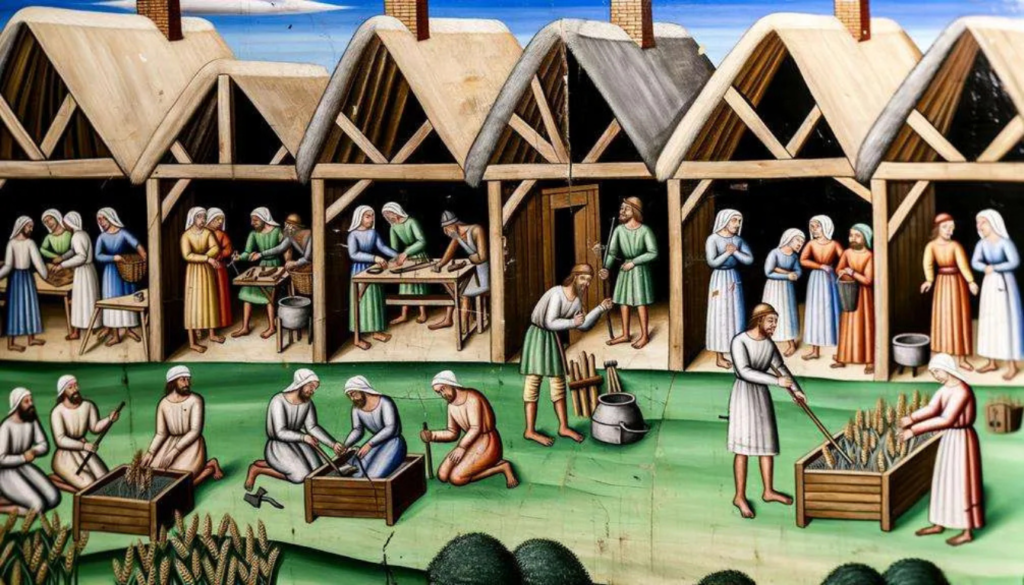
“The transition from the Romano-British to Anglo-Saxon period in Britain occurred in the 5th century A.D”
Studying the story of the Anglo-Saxons is key to understanding britain’s medieval heritage. Their legacy in medieval landmarks uk highlights their ability to adapt and thrive. Their contributions are essential to the foundations of modern Britain.
Norman Conquest: Architectural Wonders of the Invaders
In 1066, the Norman Conquest changed Britain forever. It brought new forms of leadership, language, and building designs. The Tower of London is a prime example of Norman architecture. It’s been a place of royal might for many years.
The norman britain landmarks and norman architecture uk at the Tower of London show us the Norman’s influence. This strong building was ordered by William the Conqueror for Norman rule. It was a home for royals, a main office, and a secure post.
Many key events happened at the Tower. Enemies were jailed and some were even executed there. And let’s not forget, it’s where the Crown Jewels are kept safe. With so much history, the Tower is an important symbol of Britain, welcoming visitors from around the world every year.
“The Tower of London stands as a testament to the enduring legacy of the Norman Conquest, a testament to the power and resilience of these invaders who left an indelible mark on the landscape of Britain.”
The norman britain landmarks and norman architecture uk we see at the Tower of London remind us of the Norman Conquest’s deep influence. It shaped Britain’s path for ages to follow.
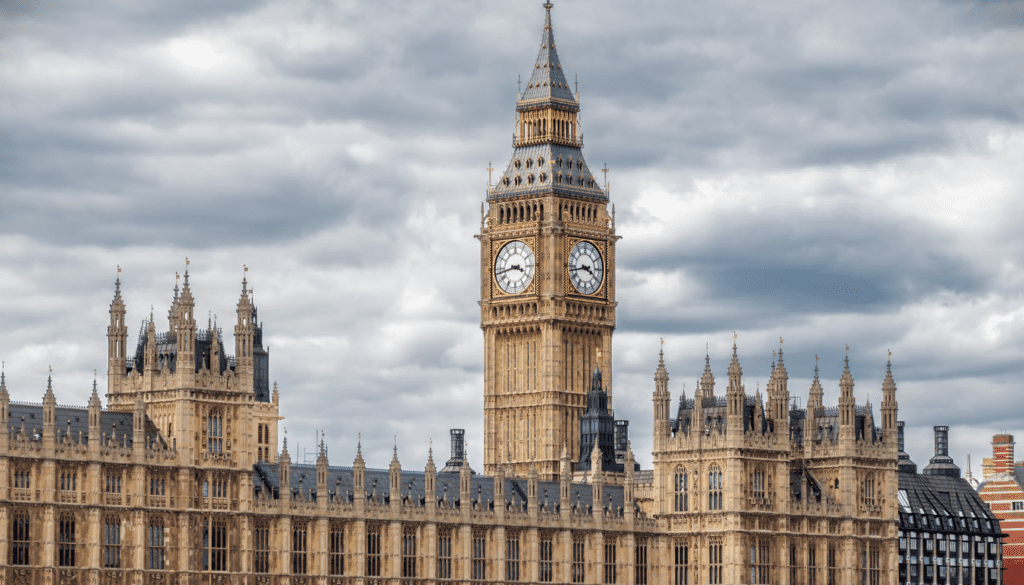
Tudor Treasures: Unveiling the Splendor of Renaissance England
The Tudor dynasty lasted from 1485 to 1603. It was a time of big changes in Britain. It changed how the country was run, what people believed in, and their culture. Hampton Court Palace is a great example of the luxury and power the Tudors had.
King Henry VIII lived in Hampton Court Palace. He was a big part of the Tudor family and made England what it is today. The palace is a beautiful example of Tudor style, with fancy details everywhere you look.
When you visit, the history comes alive. You see the palace walls, the gardens, and everything is like a storybook. The Great Hall is amazing, with a roof that’s a work of art. It shows how skilled the Tudor builders were.
Walking around, you feel the luxury and strength of the Tudors. Hampton Court Palace keeps their memory alive. It shows how much they influenced British history and culture.
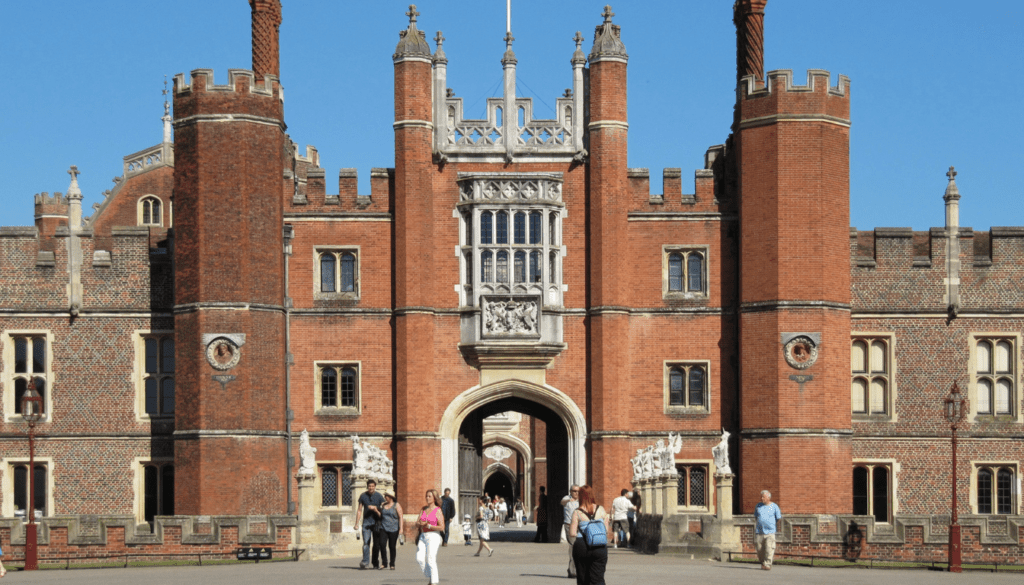
“Hampton Court Palace is a true gem of the Tudor era, a royal residence that embodies the grandeur and extravagance of the Tudor monarchs who shaped the course of English history.”
If you love history or just want to see something amazing, Hampton Court Palace is a top pick. This place is not just about beautiful buildings. It’s a reminder of the Tudor dynasty and their lasting impact on Britain.
Historic Landmarks in the UK: A Tapestry of Architectural Marvels
The United Kingdom is a gem with its historic landmarks. They spotlight the country’s culture and architecture from ages long passed till now. Whether it’s the ancient stone circles or the splendid palaces, UK landmarks show how Britain has changed over time. They include everything from castles in the wild to the elegant Georgian townhouses in Bath. These sites weave together a rich history of architectural wonders.
The Tower of London stands out as one of the UK’s iconic monuments. Made of Kentish ragstone, it’s a UNESCO World Heritage site famous for its blend of rich history and unique customs. Visitors can get lost in its magnificent design, explore its royal and prison past, and admire the Crown Jewels hidden inside.
But the UK is not just about the Tower of London. It also has various castles that still stand today. From Windsor Castle, where the Queen resides, to the lovely Warwick Castle and the bold Edinburgh Castle, each tells a tale of Britain’s tumultuous history and architectural brilliance.
The UK boasts more than castles. It’s filled with cathedrals, abbeys, and historic cities too, showing off varied architectural styles. At every turn, you might be struck by the beauty of York Minster or charmed by Bath‘s streets. These places prove the lasting impact of Britain’s rich culture.
Exploring the UK means seeing a wealth of historic sites. Every visit, from Stonehenge to the grand palaces, offers a peek into the country’s past glory. These places are not just buildings; they’re a journey through Britain’s enduring history and cultural spirit.

“Britain’s historic landmarks are not just relics of the past, but living testaments to the country’s enduring cultural identity.”
Stuart Legacy: Exploring Britain's Turbulent Past
The Stuart era lasted from 1603 to 1714. It was a time of great change and trouble in Britain. England and Scotland joined under a single crown. But they faced wars, religious fights, and power struggles.
Despite this, the Stuart monarchs built stunning places like Blenheim Palace. This magnificent estate shows the grandeur of the era. It gives us a look at both beauty and unrest of the Stuart times.
Blenheim Palace is in Oxfordshire. It’s a great example of Baroque style in the UK. It was built as a gift in the early 18th century. The Duke of Marlborough got it for winning battles.
The cost of building the palace caused some tension. Parliament helped pay to thank the Duke. This showed the struggle for power between the crown and Parliament. It was a key issue in the Stuart period.
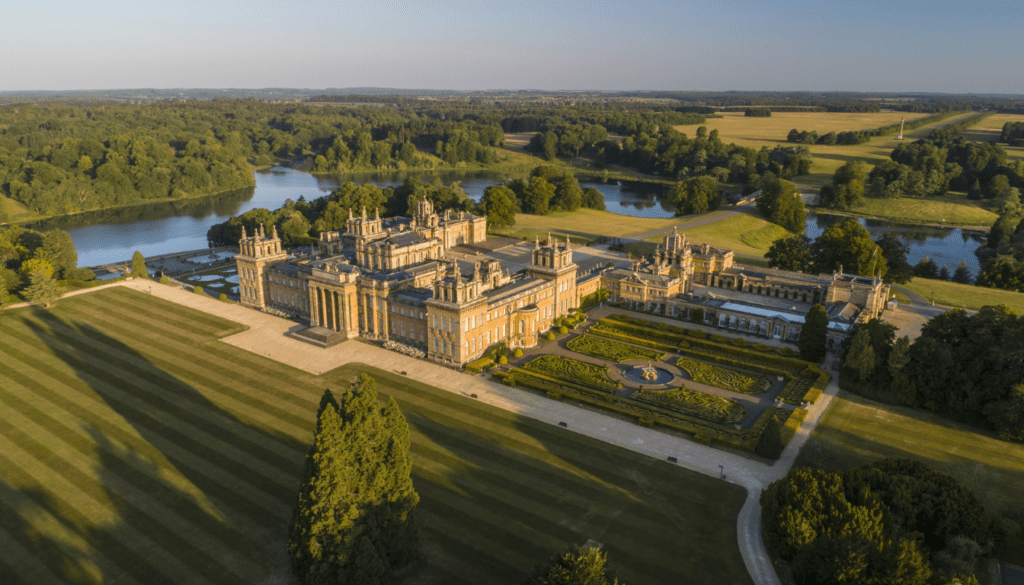
Visiting Blenheim Palace lets us see stuart britain landmarks and baroque architecture uk. We can enjoy its beauty and learn about british political history. This history influenced the making of Blenheim Palace.
Whether you love history or just enjoy old buildings, Blenheim Palace is worth a visit. It tells the story of Stuart times and its lasting effects on Britain.
Georgian Grandeur: Elegance and Opulence in Stone
The Georgian era, from 1714 to 1837, was a golden time in Britain. Prosperity and culture boomed. It was ruled by the Hanoverian monarchy.
Britain became a major international player. The iconic city of Bath showcases the best of Georgian elegance. It features beautiful architecture, grand homes, and famous spas.
Bath: A Spa City Frozen in Time
Bath’s mix of Palladian and Neoclassical styles is timeless. It makes you feel like you’re living the lavish life of Georgian aristocrats. The stunning townhouses show off the great architectural skill of the time.
But Bath’s Georgian legacy isn’t just in its buildings. Its famous Georgian canopies also add to its charm. These finely crafted canopies match the historic buildings perfectly. They help create a stunning look for the streets.
Thanks to groups like English Heritage, Bath’s Georgian beauty is well-preserved. It lets visitors step back in time and feel the grandeur of the Georgian era.
| Characteristic | Georgian Architecture |
|---|---|
| Time Period | 1714 – 1830 |
| Architectural Styles | Palladian, Neoclassical, Gothic Revival, Regency |
| Design Elements | Symmetry, classical proportions, columns, pediments, fanlights |
| Building Types | Homes, churches, public spaces |
| Materials | Red brick, wood, stone (marble, limestone, sandstone), metal |
| Notable Examples | Houghton Hall, Marble Hill, Strawberry Hill House |
Every part of Bath, from grand homes to finely crafted canopies, reflects its Georgian legacy. Exploring this city is like stepping back in time. You can see and feel the beauty and grandeur of the Georgian era.
Victorian Splendor: Marvels of the Industrial Age
The Victorian era was from 1837 to 1901. It was a time of big change in Britain. The British Industrial Revolution began in this time. It brought new building styles and engineering accomplishments. One famous Victorian building is the Houses of Parliament, where the UK government works.
The Houses of Parliament: A Neoclassical Icon
After a big fire, the Houses of Parliament were built again. They mix Neoclassical and Gothic styles well. This shows the UK’s strong democratic history. The buildings are an important part of Victorian Britain landmarks and the British Industrial Revolution achievements.
| Architectural Feature | Description |
|---|---|
| Victorian Architecture | The Houses of Parliament combine Neoclassical and Gothic styles. They represent the diverse Victorian architecture during the Industrial Age. |
| Houses of Parliament | Built in the 1850s, they are the heart of UK’s democracy. They show the nation’s democratic values. |
| Architectural Grandeur | The grand spires and detailed design of the Houses of Parliament capture the spirit of Victorian excellence. |
“The Houses of Parliament stand as a symbol of Britain’s enduring democratic spirit, their grandeur a testament to the nation’s unwavering commitment to its institutions.”
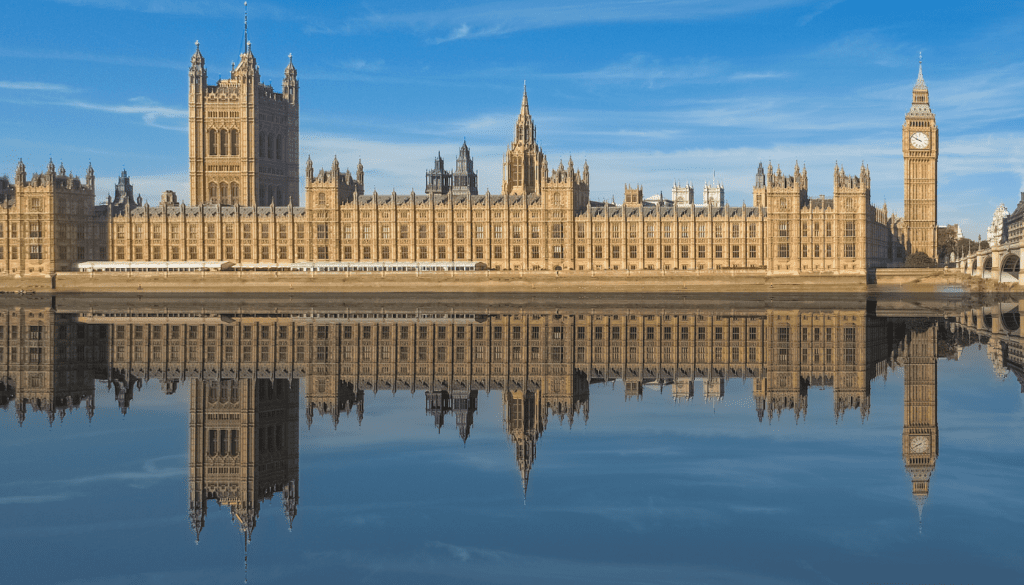
The Houses of Parliament are a prime example of Victorian architecture. They mix old and new styles. Visitors from all over are still amazed by it.
Castles and Fortresses: Strongholds of British History
Across England, Wales, and Scotland, numerous castles in britain and historic british fortresses dot the landscape. They stand as symbols of Britain’s rich and often turbulent past. These buildings range from mighty Norman castles to well-preserved medieval uk castle landmarks. They remind us of the importance of defense and the power of the monarchy and nobility. Visiting these medieval fortifications takes us back to times of war, conquest, and complex politics in the British Isles.
The UK boasts a wide variety of castles and fortresses, each with a unique story and design. Well-known castles in britain include the Tower of London, the grand Bamburgh Castle, and the beautifully restored Arundel Castle. Over the centuries, these historic british fortresses have seen the comings and goings of dynasties, the ravages of war, and the changing strategies of warfare.
Spending a night in a castle is a special experience. It lets visitors imagine what life was like for both the nobility and the soldiers. Around 70% of the uk castle landmarks mentioned here allow guests to stay. This means you can enjoy their ancient atmosphere alongside today’s comforts.
“Castles are not merely the outward and visible signs of the feudal system. They are also the living monuments of an age of faith and valor, of an age when the petty lord was a real power in the land and the stern baron a political factor to be reckoned with.”
– Winston Churchill
These castles and fortresses have stories to tell, whether it’s about their history, architecture, or offering a chance to sleep there. They give a unique look into Britain’s past. From the strong coastal forts to the elegant estates, each one speaks to the British people’s spirit and strength.
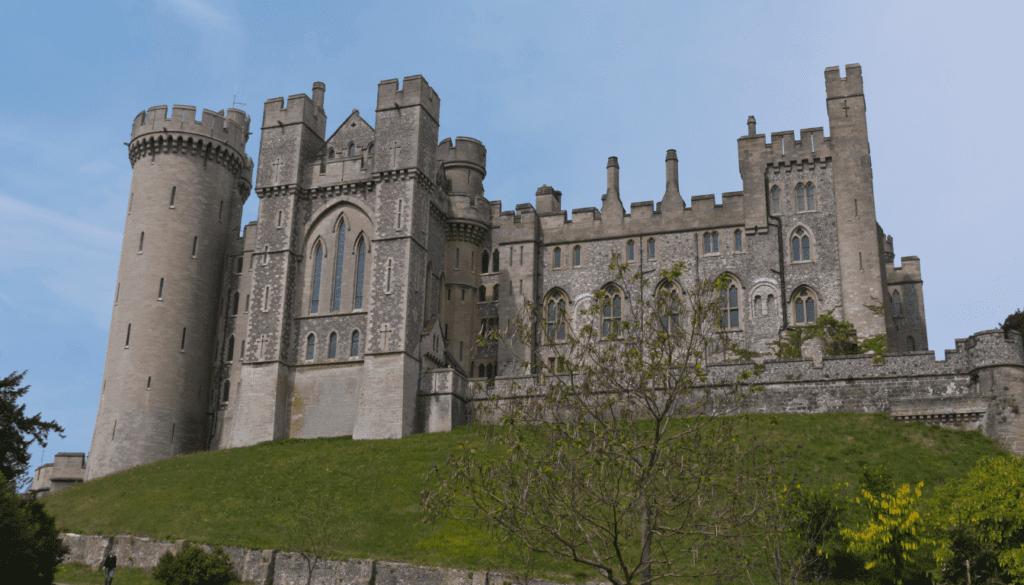
For more on Britain’s castle history and beauty, check out the examples below:
- Acton Burnell Castle: Built between 1284-1293 by Robert Burnell, Bishop of Bath and Wells
- Alnwick Castle: Renovated and remodelled many times since the Norman conquest
- Appleby Castle: Norman castle built around 1170, once owned by the Kings of England
- Arundel Castle: Founded in 1067, restored throughout the 18th and 19th centuries
- Ashby-de-la-Zouch Castle: Founded by Norman noble Alain de Parrhoet in the 12th century
These examples are just a glimpse into the many castles in britain and historic british fortresses waiting to be explored. They attract visitors from all over the globe.
Cathedrals and Abbeys: Spiritual Monuments of Britain
Across the United Kingdom, you’ll find stunning cathedrals and abbeys. They stand tall, reflecting the country’s deep Christian roots. Take York Minster for example. It’s a breathtaking Gothic cathedral that’s been a cornerstone of faith and culture in northern England for ages.
York Minster: A Gothic Masterpiece
York Minster is known for its high spires, detailed stonework, and beautiful stained glass. It shows off the best in architecture and art from Britain’s past. Its Gothic style, with pointed arches and detailed ceilings, is a marvel. It proves the amazing work of the builders.
York Minster’s story starts in the 7th century, with a simple wooden church. Since then, it’s seen lots of changes and grows, adding to its beauty and history. From its Norman parts to the incredible east window from the 15th century, it’s a mix of many styles, making it a key piece of both historic cathedrals uk and gothic architecture britain.
Today, the cathedral is alive with both spiritual and cultural events. People from all over come to admire its grandeur and art. As a standout among british abbeys, York Minster shows how faith and creativity can do amazing things.
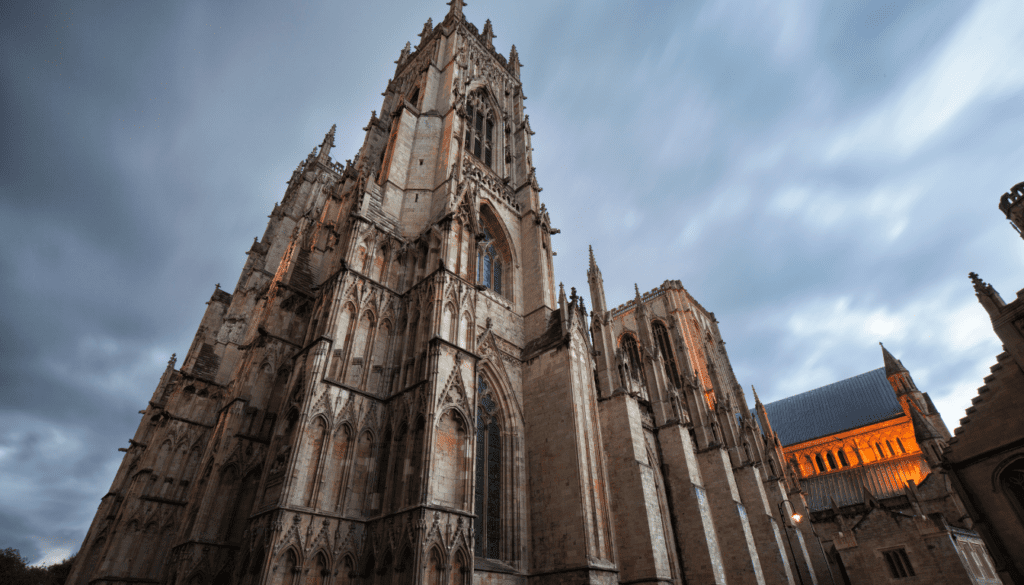
“York Minster is a true masterpiece of gothic architecture britain, a stunning example of the devotion and artistry that defined the construction of these sacred spaces throughout the country’s history.”
Historic Cities: Timeless Treasures of Urban Britain
Beyond Britain’s famous sites, its historic cities are rich with culture and architecture. York’s medieval roads and Edinburgh’s elegant buildings showcase centuries of history. They were central to politics, economy, and society. Edinburgh especially shines as Scotland’s fascinating capital.
Edinburgh, the Scottish government’s home, breathes history. Its ancient castle on a volcano tells of Scottish dynasties and Independence. Walking the Old Town’s alleys feels like stepping back in time.
The city’s neoclassical style, seen in the Royal Mile, celebrates Scotland’s culture. St. Giles’ Cathedral and Georgian houses blend past and present. Edinburgh’s architecture captivates with ageless allure.
Edinburgh’s lively arts scene highlights the city’s lasting influence. The famous Edinburgh Festival brings global attention to its heritage. Places like Holyrood Palace and Arthur’s Seat reflect its rich history and breathtaking views.
As a key historic cities uk, Edinburgh shows how Britain cherishes its british urban heritage. It’s a must-see for history, style, and the allure of a classic city. Edinburgh inspires with its rich past.

“Edinburgh is a city that is both ancient and modern; it is a city of contrasts, a city of beauty and a city of culture.”
| Landmark | Significance |
|---|---|
| Edinburgh Castle | A historic fortress on an extinct volcano, key in Scotland’s history. |
| Royal Mile | Links Edinburgh Castle to the Palace of Holyroodhouse, showing its architecture. |
| Palace of Holyroodhouse | Scottish royal residence, rich in history. |
| Arthur’s Seat | Hill in Holyrood Park with city views and natural beauty. |
Country Estates and Gardens: Tranquil Retreats of the Past
Across the British countryside, you can find many historic estates UK and british country homes. They show us how the rich lived in the past. Surrounded by historic gardens britain, these places are like stepping back in time. You can imagine the nobility living there hundreds of years ago.
In the South East, you’ll discover 56 treasures. Dorney Court, a Tudor Manour House, has stood for many centuries. Shaw House, from the time of Elizabeth I, has hosted kings and was a haven during World War II. These places are full of history and beauty.
There are more amazing places in the region. Chenies Manor House is a fine example of a Tudor Mansion. Stowe House has impressive gardens and is now a school. The area is also home to Waddesdon Manor with its great art collection, and Firle Place, filled with beautiful paintings and furniture.
Historic places aren’t just in the South East. All over, there are uk national trust properties and gardens that amaze. Places like Peckforton Castle in Cheshire or Cliveden in Buckinghamshire are favorites. They let you feel the grandeur of the past.
Beyond known places, there are many more to explore. Charney Manor, Gravetye Manor House, and Oakley Hall Hotel are just a few examples. They all offer a unique experience to learn about Britain’s history and how the wealthy lived.
| Historic Estate | Location | Notable Features |
|---|---|---|
| Dorney Court | Buckinghamshire | Outstanding Tudor Manor House, Grade 1 Listed, home to the Palmer family for fourteen generations |
| Shaw House | Berkshire | Well-preserved Elizabethan mansion built in 1581, welcomed royalty and housed soldiers during World War II |
| Chenies Manor House | Buckinghamshire | One of the UK’s finest Tudor Mansion Houses, nestled in the Chilterns and close to London |
| Stowe House | Buckinghamshire | Amidst enchanting gardens, known for its temples and art, saved from demolition and now serving as a school |
| Waddesdon Manor | Buckinghamshire | Mansion built by Ferdinand de Rothschild, showcases an extensive art collection including Dutch Masters and outstanding furniture |
| Firle Place | East Sussex | The Gage family home for over 50 years, boasts an extraordinary collection of old master paintings, porcelain, and furniture |
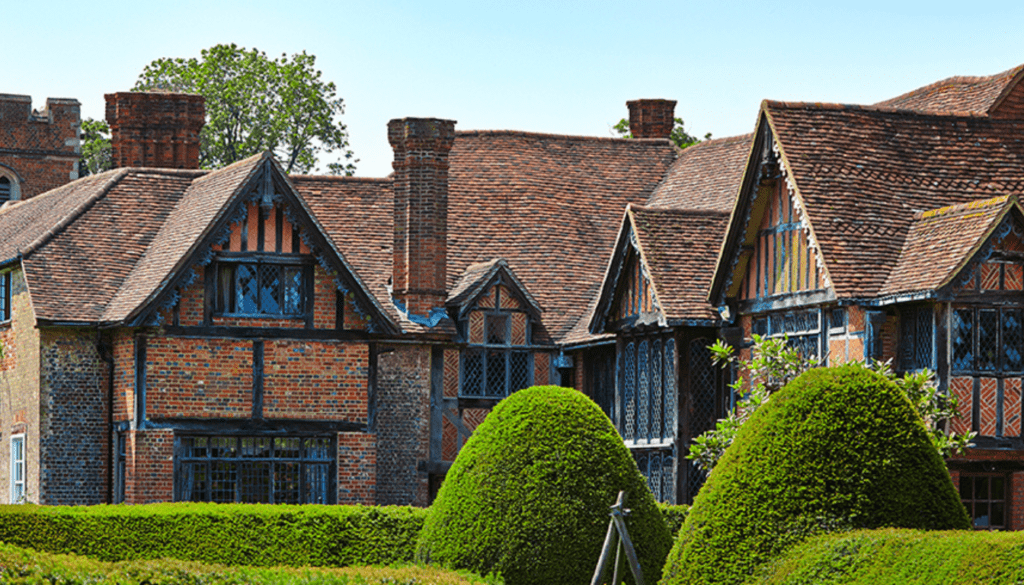
These historic estates UK offer a look into the past. With their gardens and rich histories, they still captivate us. These uk national trust properties keep Britain’s aristocratic past alive for all visitors to enjoy.
Industrial Heritage: Remnants of Britain's Industrial Revolution
The Industrial Revolution changed Britain into the world’s first industrial nation. It left a big impression on how the country looks and feels. The center of this big change was Ironbridge Gorge, seen as the place where the Industrial Age started. It has the world’s first cast-iron bridge, showing the start of many new ideas, tools, and ways of life that made Britain modern.
Ironbridge Gorge: Birthplace of the Industrial Age
Ironbridge Gorge shows how Britain was at the front of the industrial heritage uk and the british industrial revolution. This special place, in Shropshire, is full of old historic manufacturing sites. It tells the story of how Britain changed with its first cast-iron bridge and other places visitors can see and hear how things were back then.
For years, people have worked hard to keep the area’s industrial history alive. Since 1973, the UK has led in talking about the world’s industrial past. Groups like the Council for British Archaeology and the Association for Industrial Archaeology have helped a lot. They make sure these key parts of history are kept for everyone to learn from and enjoy.
Ironbridge Gorge today shows how clever and strong British people were. They faced the hard parts of the british industrial revolution and became leaders in making things and thinking of new ideas. This place is a special chance for visitors to see where the modern world of industry began.
Conclusion: Preserving Britain's Legacy for Future Generations
The United Kingdom treasures many historic sites. These include everything from ancient monuments to the more recent industrial buildings. They are keystone reminders of England’s long history. Keeping these places safe is important. This honors the past and helps future people connect with their history.
Looking after these landmarks tells Britain’s story. It shares history with everyone who visits. Most adults in the UK have recently been to a heritage site. And nearly 70% feel these places are good for their communities. The UK National Trust is key in keeping Britain’s heritage safe. They look after more than 400 sites across the country.
It’s vital to work hard in saving these cultural treasures. This means fixing and looking after them. It also means getting people involved in these places. By doing this, we make sure they stay important for many years to come. This effort will keep the UK’s history alive for future generations to enjoy.
FAQ
What are some of the most iconic historic landmarks in the UK?
The UK is home to many historic sites. These include Stonehenge, Hadrian’s Wall, and the Tower of London. Also, Hampton Court Palace, Blenheim Palace, the Houses of Parliament, and York Minster are key landmarks.
What is the significance of Stonehenge?
Stonehenge is a circle of huge stone pillars. It’s from over 5,000 years ago and still puzzles experts. This site gives us a peek into ancient life and beliefs.
What is the historical importance of Hadrian’s Wall?
Hadrian’s Wall was built by the Romans in England. This 73-mile long wall marked the Roman Empire’s border. It showed off Roman skills and separated their lands from the wild north.
How did the Norman Conquest shape Britain’s architectural landscape?
The Norman Conquest in 1066 changed Britain a lot. It brought new rulers, language, and building styles. The Tower of London is a prominent example, showcasing Norman power and skill.
What makes Hampton Court Palace a remarkable Tudor-era landmark?
It was the main home of Henry VIII and the Tudor kings. Hampton Court Palace shows the wealth and influence of the Tudors. The building and its history reveal a lot about Britain’s past.
Why is Blenheim Palace considered a significant Stuart-era landmark?
Blenheim Palace was a grand present in the 1700s. It highlights the lavish Stuart period with its Baroque design. Visiting shows off Stuart power and the changing English politics of the time.
What makes the city of Bath a prime example of Georgian architecture and grandeur?
Bath shows the elegant Georgian style at its finest. The town, spas, and buildings reflect wealth and culture. Its look, mixing Palladian and Neoclassical, makes visitors feel the presence of the past.
How do the Houses of Parliament reflect the Victorian era’s architectural and technological advancements?
After a fire, the Houses of Parliament got a new look. It mixes Neoclassical and Gothic styles. It stands for British democracy, showing the Victorian age’s progress and industrial might.
What makes the historic castles and fortresses of the UK important to British history?
Castles and fortresses tell the story of Britain’s past. They protect its history and secrets through the ages. These structures show the might and authority of the rulers over time.
Why is York Minster considered a significant cathedral in British history?
York Minster is a gorgeous Gothic cathedral. It’s been key in the north for a long time. Its features are stunning examples of Britain’s religious and creative past.





















